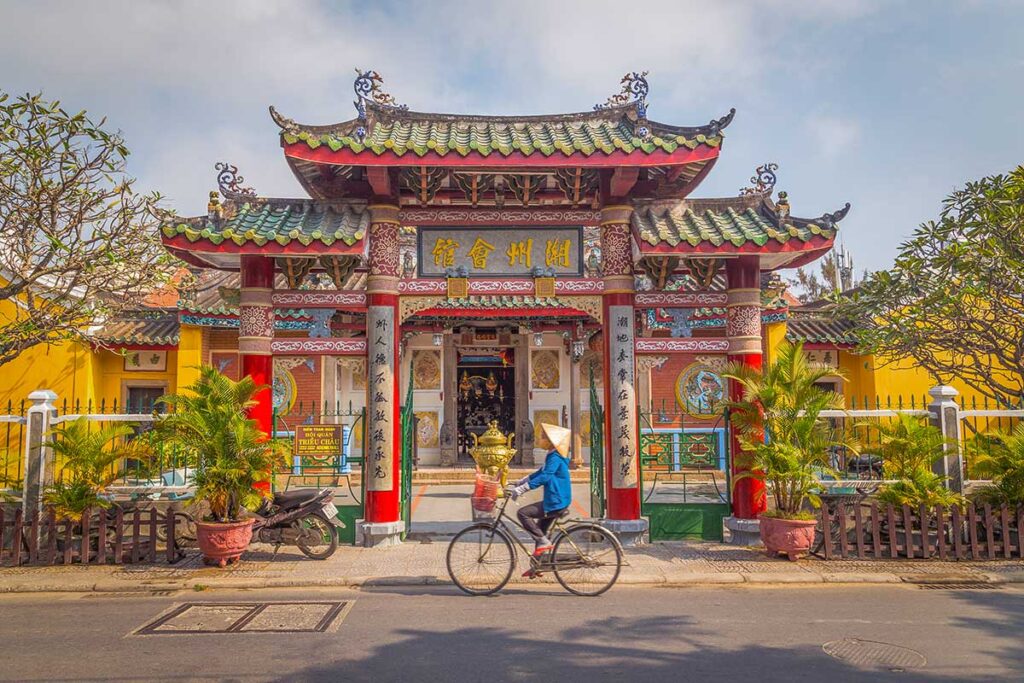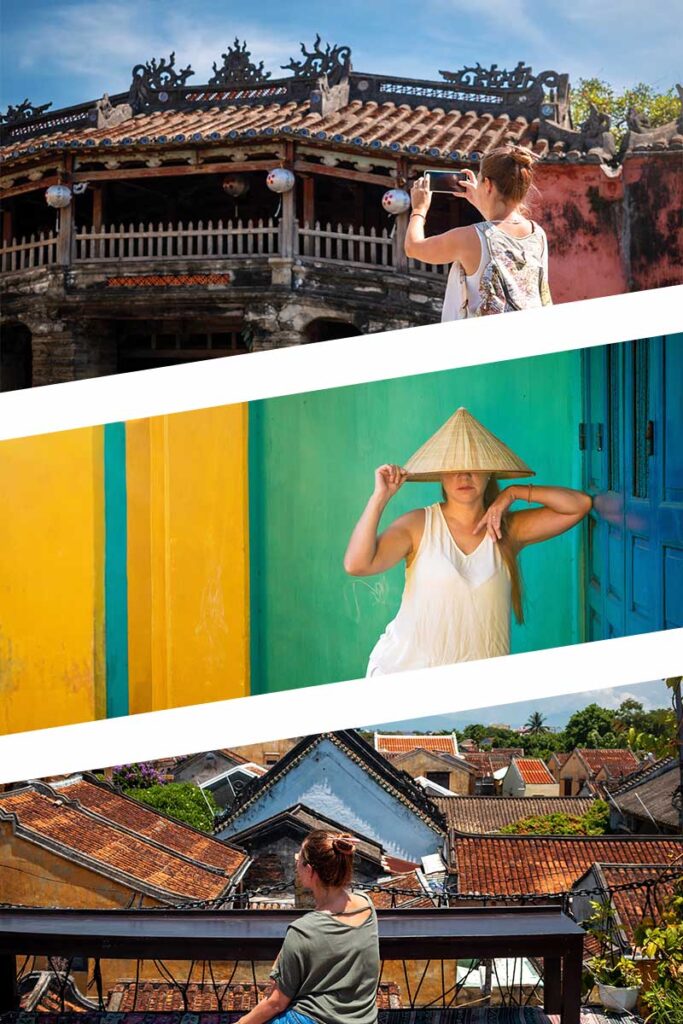What is the Trieu Chau Assembly Hall?
The Trieu Chau Assembly Hall (also called Teochew Hall or Ong Bon Pagoda) served as a spiritual and communal center for the Teochew Chinese community in Hoi An.
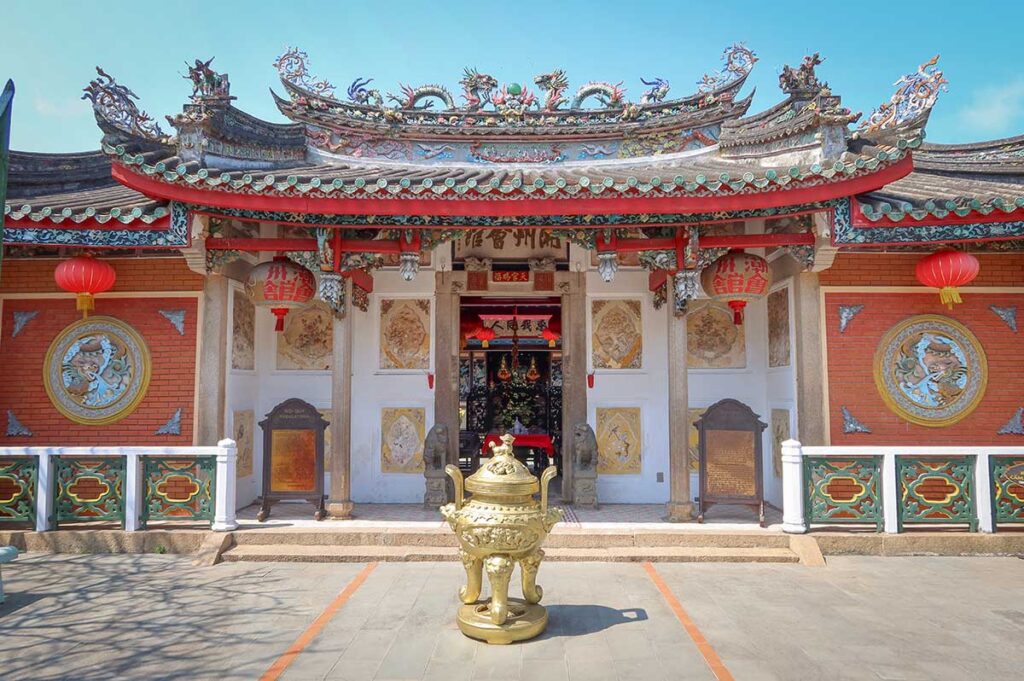
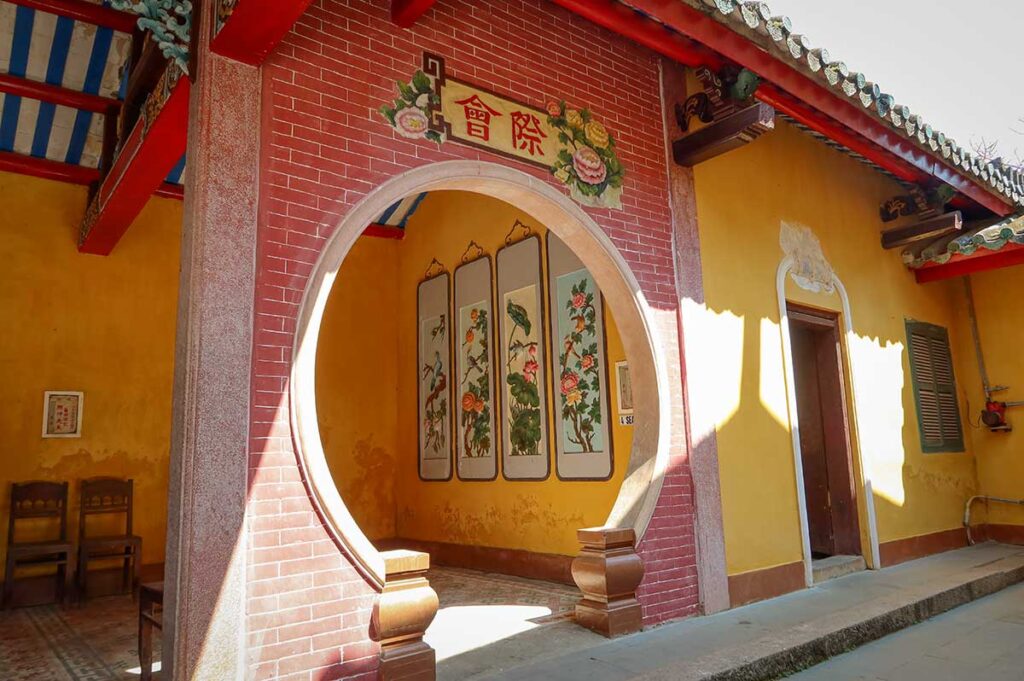
Built in the mid-1800s, it was dedicated to deities who govern rivers and seas—reflecting the seafaring roots of many Teochew settlers who came to Hoi An for trade. Like the other Chinese assembly halls in the Ancient Town, it was more than just a temple—it was a place where merchants gathered, preserved traditions, and supported each other through business and cultural life.
Hoi An Walking Tour by Local Guide
- Experience Explore Hoi An’s Ancient Town with an expert local guide and insider stories.
- Includes Market visit, traditional house, colorful temples, and coffee break by electric car.
History of Trieu Chau Assembly Hall
Trieu Chau Assembly Hall was founded in 1845 by Teochew (Trieu Chau) merchants who had settled in Hoi An during its peak as a trading port. The original structure was built primarily of wood and later renovated and expanded over the years to its current form. It was established as a place of worship for Ong Bon (a guardian deity) and sea-related gods who were believed to offer protection and favorable conditions for merchants and sailors. Every year, the hall hosts traditional ceremonies, including ancestor commemorations and rituals during the Lantern Festival. Today, it remains a quiet but culturally rich site that reflects the Teochew community’s lasting legacy in Hoi An.
Highlights & Architecture
While smaller than other halls, the Trieu Chau Assembly Hall impresses with its intricate craftsmanship and elegant detail. Every element reflects the Teochew community’s cultural pride and maritime heritage, with symbolic decorations throughout the space.
1. Tam Quan Gate

The ornate triple-arched gate marks the transition from street to sacred space. Covered in vibrant red and green tones, it features protective motifs like dragons and traditional calligraphy invoking fortune and harmony.
2. Courtyard & Reception Area

A peaceful courtyard sits just inside, surrounded by bonsai trees and small statues. This area also functions as a reception space where gifts, commemorative plaques, and festival items are occasionally displayed.
3. Main Hall & Deities
The main hall houses altars dedicated to sea gods, Ong Bon (a guardian spirit), and other deities that traders would pray to for safe voyages and good fortune. The layout is symmetrical and intimate, making it easy to take in the fine details.
4. Roof, Reliefs & Carvings
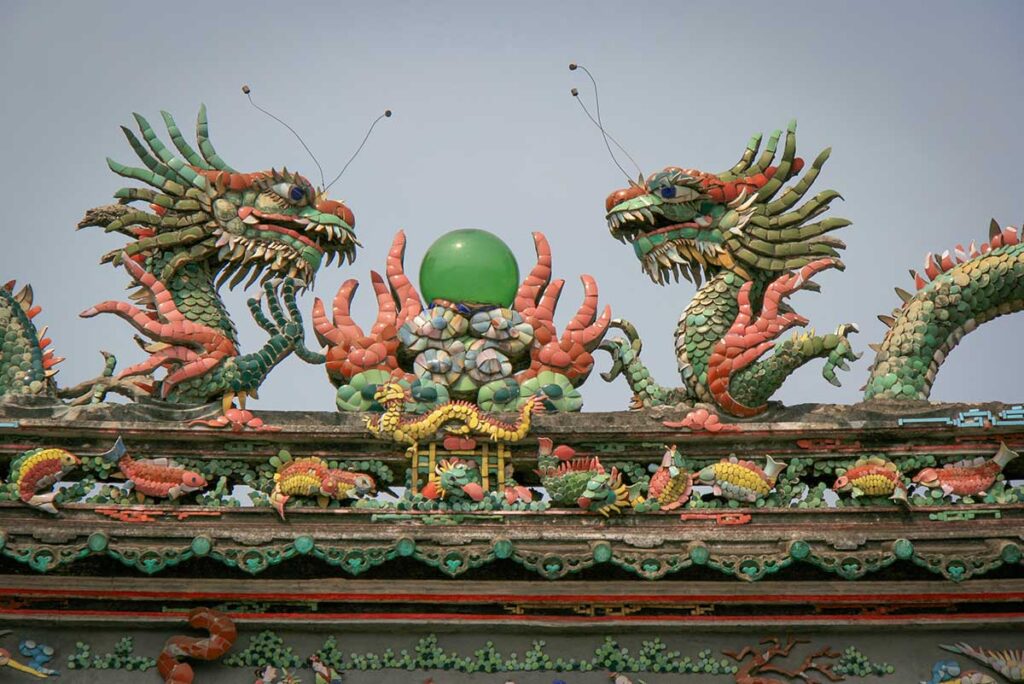

The decorative roof ridges and gables are filled with Teochew motifs—dragons, phoenixes, waves, carp, and butterflies—crafted in relief and porcelain. These elements tell stories of transformation, protection, and prosperity.
5. Porcelain, wood & marble details
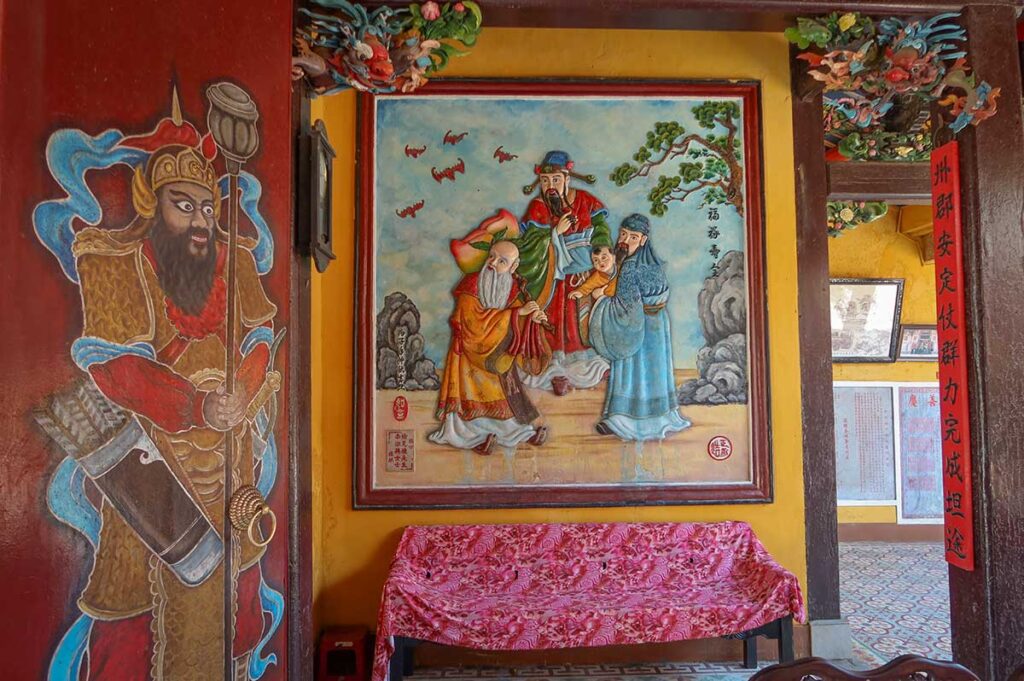
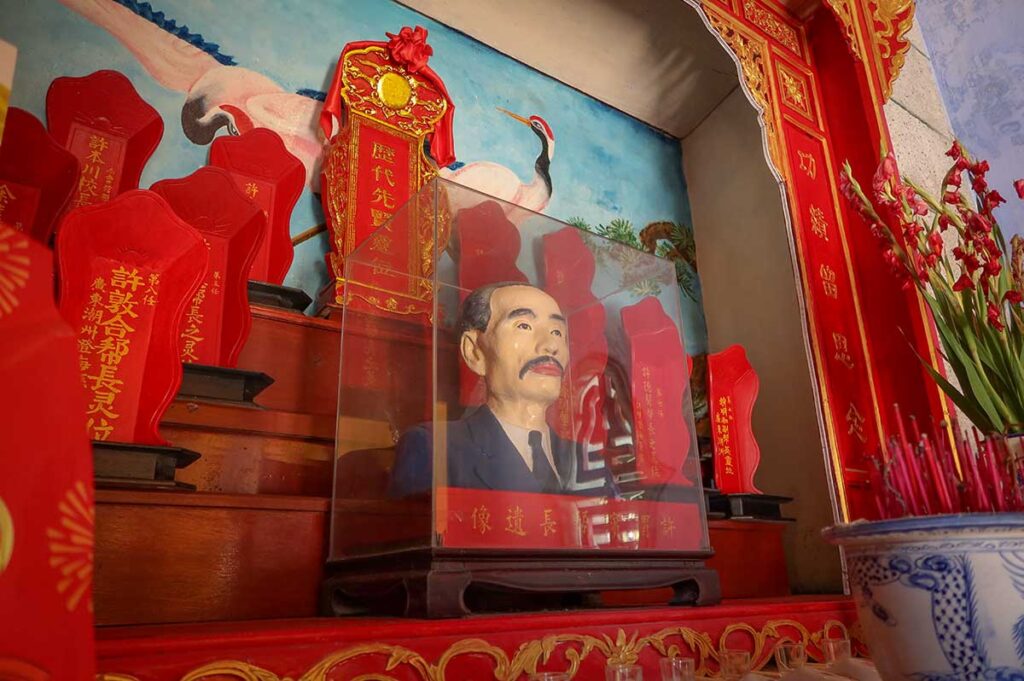
Mixed materials give this hall a unique charm. Intricate wood carvings, marble inlays, and colorful porcelain panels come together in a balanced and visually harmonious design.
6. Festival decorations
During major events like Tết Nguyên Tiêu (Lantern Festival), the hall is beautifully decorated with flowers, offerings, and ceremonial items. These add an extra layer of meaning to the space, showing its continued role in cultural and religious life.
Visiting information
Opening hours
Open daily from 7:00 AM to 5:00 PM. Morning visits are best to enjoy the quiet atmosphere and softer light for photos.
Entrance fee
Access is included in the Hoi An Ancient Town ticket (120,000 VND), which allows entry to five designated sites—including three of your choice like this assembly hall.
Where is i?
You’ll find Trieu Chau Assembly Hall at 157 Nguyen Duy Hieu Street, on the eastern edge of the Ancient Town, near other cultural sites like the Chinese Assembly Hall.
How to get there
From the main walking route along Tran Phu Street, just head east through the Ancient Town. It’s an easy 10-minute walk from the Fujian Assembly Hall, following a logical sightseeing loop.
Is it worth visiting?
Yes — especially if you’re looking for a quieter, more detailed experience. However, the Trieu Chau Assembly Hall is smaller and less impressive than the Fujian or Cantonese halls.
It’s a great stop for travelers interested in Chinese culture, artistic detail, and less crowded spots in Hoi An. If you’re using the Ancient Town ticket and can choose three assembly halls, the Fujian and Cantonese Halls are the most impressive. Then, add either Trieu Chau or Hai Nam for a more relaxed, off-the-main-path bonus.
Other Assembly Halls in Hoi An
If you’re exploring the Chinese heritage of Hoi An, these other assembly halls are also worth visiting:
- Phuc Kien Assembly Hall (Fujian) – The largest and most famous hall in Hoi An, known for its vibrant architecture and dedication to the sea goddess Mazu. A must-see for most visitors.
- Cantonese Assembly Hall (Quang Dong) – Close to the Japanese Bridge, this impressive hall is dedicated to Guan Yu and features striking woodwork, altars, and a dragon fountain.
- Hai Nam Assembly Hall – Built in honor of 108 Hainanese merchants, this peaceful hall offers a meaningful historical backstory and spacious layout.
- Trung Hoa Assembly Hall (Ngu Bang) – The only free-to-enter hall, built by five Chinese communities. While simpler than the others, it’s still culturally interesting and easy to combine with nearby sites.
